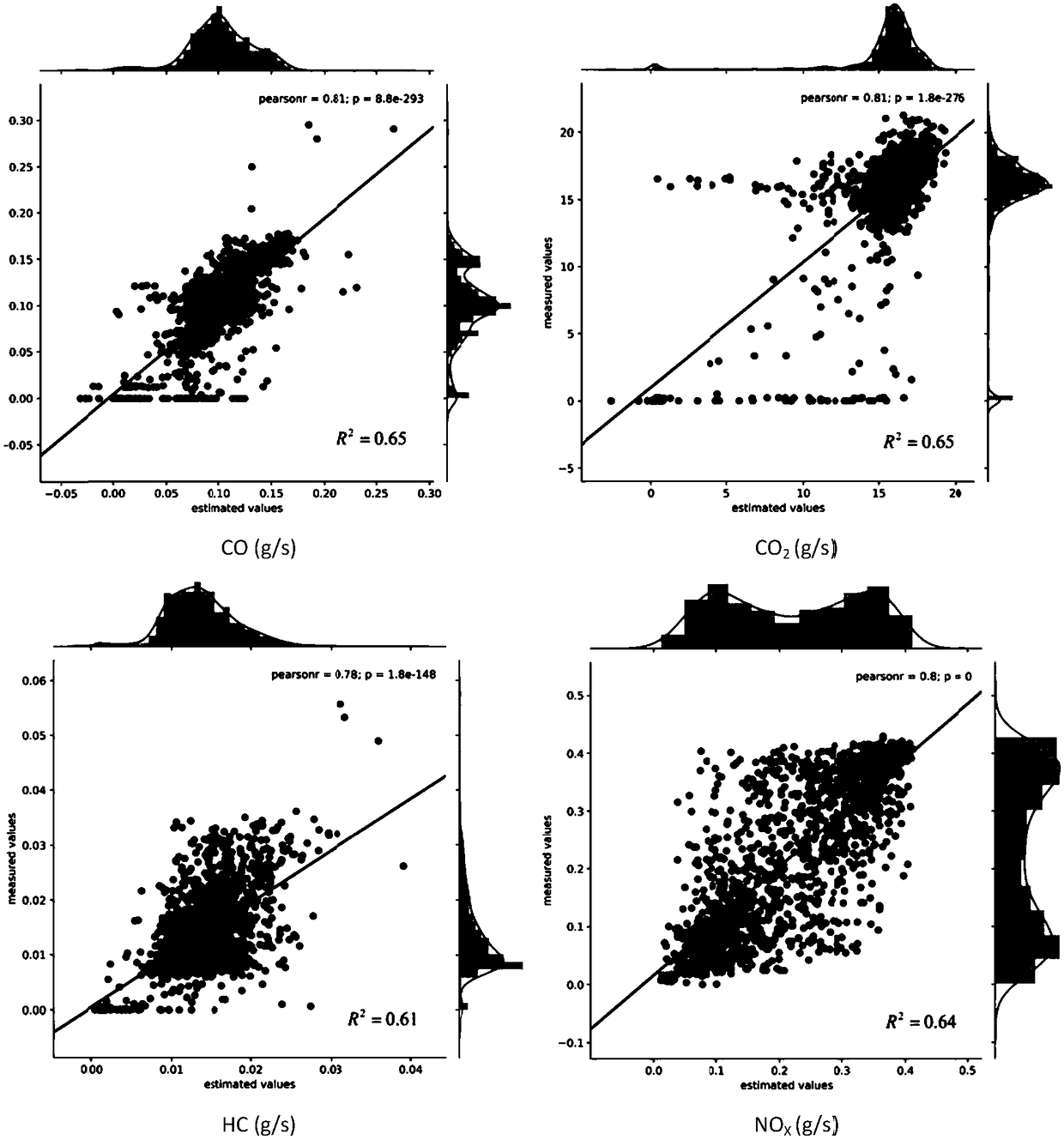An urban bus emission rate estimation method based on a gradient lifting regression tree
A technology of urban buses and regression trees, applied in the field of intelligent transportation technology and traffic environment, can solve the problems of over-fitting of emission estimation models, incomplete application of models, inability to accurately quantify explanatory variables and emission rates, etc.
- Summary
- Abstract
- Description
- Claims
- Application Information
AI Technical Summary
Problems solved by technology
Method used
Image
Examples
Embodiment Construction
[0057] The technical solutions of the present invention will be further described below in conjunction with the accompanying drawings and embodiments.
[0058] As attached to the manual figure 1 Shown, the present invention proposes a kind of urban bus emission rate estimation method based on gradient lifting regression tree, and this method comprises the steps:
[0059] (1) Use PEMS to measure the urban road bus emission and driving status data, and use the Lagrangian interpolation method to standardize the data.
[0060] The test and training data sets of the bus emission estimation algorithm based on the gradient boosting regression tree of the present invention are all from the measured data of buses No. 1, No. 51 and No. 206 in Zhenjiang City, Jiangsu Province. Use PEMS equipment to collect real-time emission rates of buses during operation, including CO, CO 2 , HC, NO X The emission rate of the four pollutants, while using the handheld GPS device to record the vehicle...
PUM
 Login to View More
Login to View More Abstract
Description
Claims
Application Information
 Login to View More
Login to View More - R&D
- Intellectual Property
- Life Sciences
- Materials
- Tech Scout
- Unparalleled Data Quality
- Higher Quality Content
- 60% Fewer Hallucinations
Browse by: Latest US Patents, China's latest patents, Technical Efficacy Thesaurus, Application Domain, Technology Topic, Popular Technical Reports.
© 2025 PatSnap. All rights reserved.Legal|Privacy policy|Modern Slavery Act Transparency Statement|Sitemap|About US| Contact US: help@patsnap.com



